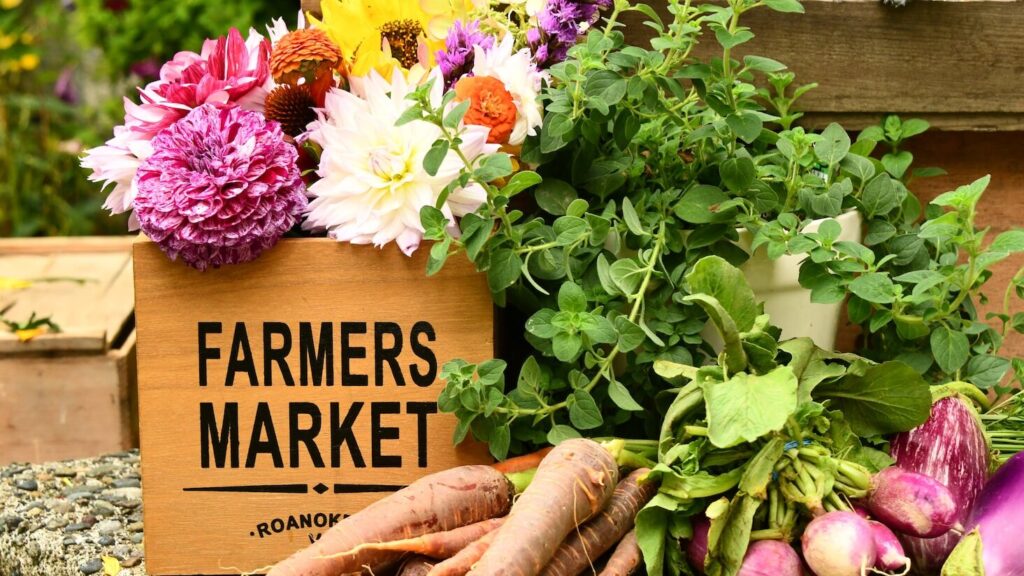27 Fresh Foods to Eat in Spring
Last summer, our family rented a farm house in rural Georgia. During a morning walk we discovered massive amounts of blackberry bushes. More berries than we could eat! The pleasure of picking fruit and feeding our family straight from the vine gave us a deep level of satisfaction and gratitude. Enjoying fresh blackberries over vanilla ice cream is a taste I’ll never forget! Genesis 1:29 says;
See, I give you every seed-bearing plant that is upon all the earth, and every tree that has seed-bearing fruit; they shall be yours for food.
Genesis 1:29
God gave us plants to eat from the vine. The first home He created for Adam and Eve was a garden. It’s always been God’s intention that we’d enjoy fresh produce from the ground as food. God knows how our bodies work and gave His children the best foods right from the beginning. In this post, you’ll learn why eating seasonally is an important part of a holistically healthy life for Christians. Plus, a roundup of 27 fresh foods to eat in spring.
What is eating seasonally?
Eating seasonally is eating foods in each season that are natural for that time of year to grow. Before modern agriculture, we didn’t enjoy apples a year long. We ate the food that grew that time of year and what was nearby. Even just a few generations ago, homemakers canned spring and summer produce preserving it over winter. Pickling vegetables was common to extend shelf life.
Today, we’re blessed with ample grocery stores and delivery services bringing us what we need, when we need it. As a mom of 3, it’s pretty nice for sure! I love the ease of it. But eating foods in season and local is a huge blessing to our bodies, economy and environment.
Why is eating seasonally important?
Living a holistically healthy life looks at how choices affect many areas of our life. Seasonal eating isn’t just healthy for our bodies. It has a big impact on your local economy and environment. All these factors impact our quality of life directly and indirectly.
Seasonal local food is packed with flavor and nutrients
You know if you’ve ever picked fresh blackberries off the bush in the summertime. And if you’ve eaten watery strawberries in January, you know. Eating fruits and vegetables out of season doesn’t burst with flavor. The taste is diluted and nutritional value is lost. And there’s a good reason why.
Out-of-season produce harvests in suboptimal conditions. If you’re eating local, seasonal produce the food is picked at its prime when ripened. Food that’s grown and shipped from other countries is picked before it’s ripe. Losing both flavor and nutritional density. Some antioxidants like folate and vitamin C in produce begin declining after harvest. Your orange from across the county doesn’t boost your immunity like the orange from your local farm.
Eating seasonly is good for the economy and environment
Shopping at your local farmers market or CSA puts money directly into your neighbor farmers pocket. That’s great for them and good for you too. Local business transactions help grow your local economy. And the environment? Yes, the home God gave us to inhabit and care for? By shopping local, you support a food source that needs minimal fuel and energy to arrive at your table. A big win for the environment. Caring for our environment is good stewardship of the home God gave us.

How to get started with seasonal eating
Becoming a farmer is out of reach for most of us. But if you’re interested in growing your own, start with one or two. I found starting herbs to be the easiest and very enjoyable. Herbs can be grown in planters, minimizing the space needed. As you grow in skill and confidence, slowly add more of your favorites each year. Lastly, visit your local farmer’s markets. Get to know your local CSA. You’ll build community and support your local economy. Plus, you’ll enjoy better-tasting food and reap the nutritional benefits.
If you need help getting started with trying Spring produce. Check out this Spring Produce Checklist Challenge. It has 17 fruits and vegetables plus the nutrients you’re getting when you eat them.
Tips for success for eating in season
27 Fresh Foods to Eat in Spring
Apples Carrots Lemons Radishes Apricots Celery Lettuce
Asparagus Avocados Garlic Mushrooms Collard Greens Strawberries
Bananas Spinach Herbs Broccoli Onions Kale Peas Limes
Turnips Cabbage Kiwifruit Pineapples Swiss Chard Rhubarb
Frequently Asked Questions
The last thing you need to know about eating spring foods
Eating seasonally connects you to your food, getting the most flavor and nutrients out of what you eat. Take advantage of all the delicious seasonal produce that’s available this spring.
What spring food on this list do you want to try first? Leave a comment below!










